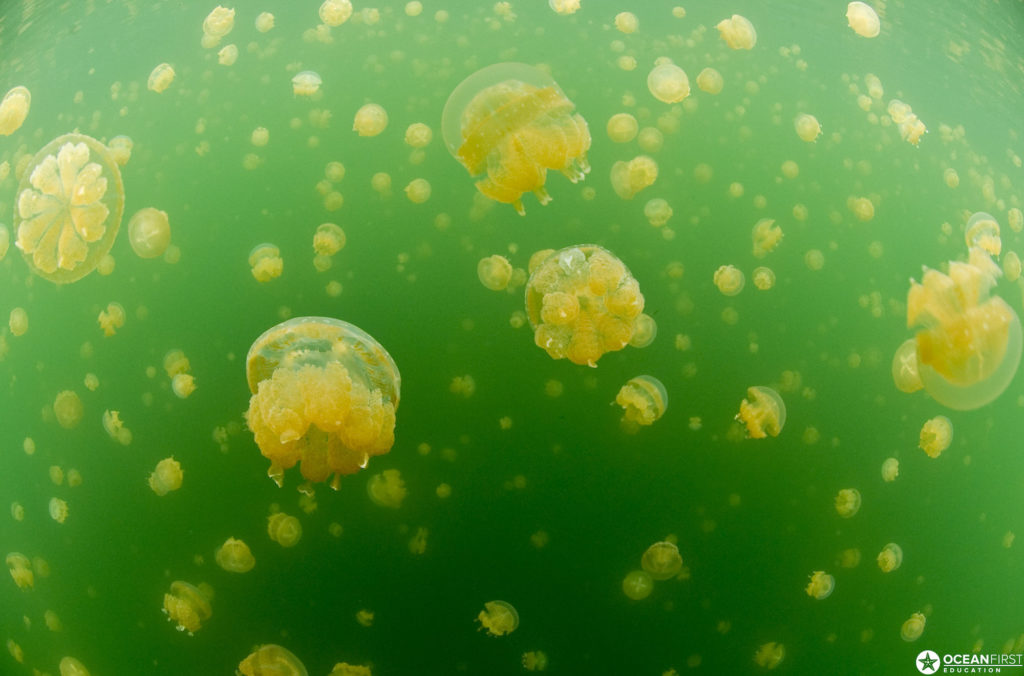Mission Blue Heads to Palau to Investigate MPA Successes and Challenges
October 24, 2018
Named as one of National Geographic’s “Last Great Places on Earth”, The Republic of Palau is an isolated archipelago in the Western Pacific that encompasses 340 islands and some of the world’s most remarkably vast biological diversity. Palau is home to more marine life species than most any other area of comparable size on Earth. Three of the world’s major currents collide here, creating a giant mixing zone that drives productivity for thousands of species including vibrant corals, squid, starfish, sea urchins and more than 1,500 species of fish. The continued success of the marine life here is due, in part, to the citizens’ and government’s steadfast dedication to conservation and protection.

The Mission Blue team is embarking on an expedition to Palau to highlight the nation’s protected areas, high biodiversity and threats faced by marine life such as illegal fishing. Throughout the expedition, the team will meet with local conservationists, political leaders and partner nonprofits to discuss strategies to bring more resources to this region to address conservation efforts. Dr. Sylvia Earle has even extended an invitation to President Remengesau to join the team for a meeting or dive.

In 2009, Palau became the first country to fully protect sharks in its waters and in 2015, the nation established its entire Exclusive Economic Zone (EEZ) as a fully protected marine reserve, making it a no-take zone and completely banned all fishing and mining activities. Palau’s conservation efforts have paid off: scientists have discovered that since the establishment of the marine reserve, the populations of several species of fish have doubled, while predatory species’ numbers have nearly quintupled – demonstrating that when Earth’s waters are left alone, the ocean can take care of itself and recover.

Today, Palau holds worldwide recognition as one of the best diving destinations on the planet with mysterious blue holes, abundant coral reefs and its famous Jellyfish Lake where millions of tiny, stingless jellyfish thrive – the species’ only known habitat. However, Palau’s magnificently large marine reserve makes it naturally difficult to patrol, and the area is threatened by illegal fishing and alarming levels of plastic pollution that pours in from the circulating ocean currents, depositing garbage from all over the world onto its beaches.

Throughout the week, the expedition team will conduct dives in several of Palau’s waters to observe and document the beauty of local marine life and the continued threats posed by human-generated stressors such as illegal fishing. Follow along on Mission Blue’s online channels to see underwater photography and video content from Palau’s beautiful ecosystems, and be sure to tune in to catch live broadcasts from Dr. Earle and the team.
We would like to extend a very special thanks to ACTAI Global Foundation, Glenn Bucksbaum, Oceanic Society and Scubapro – this expedition wouldn’t be possible without their support!










Palau is also the site of huge WWII naval battles as well as those on land. Should be an awsome place to dive and to visit. Lots of history along with the beauty.